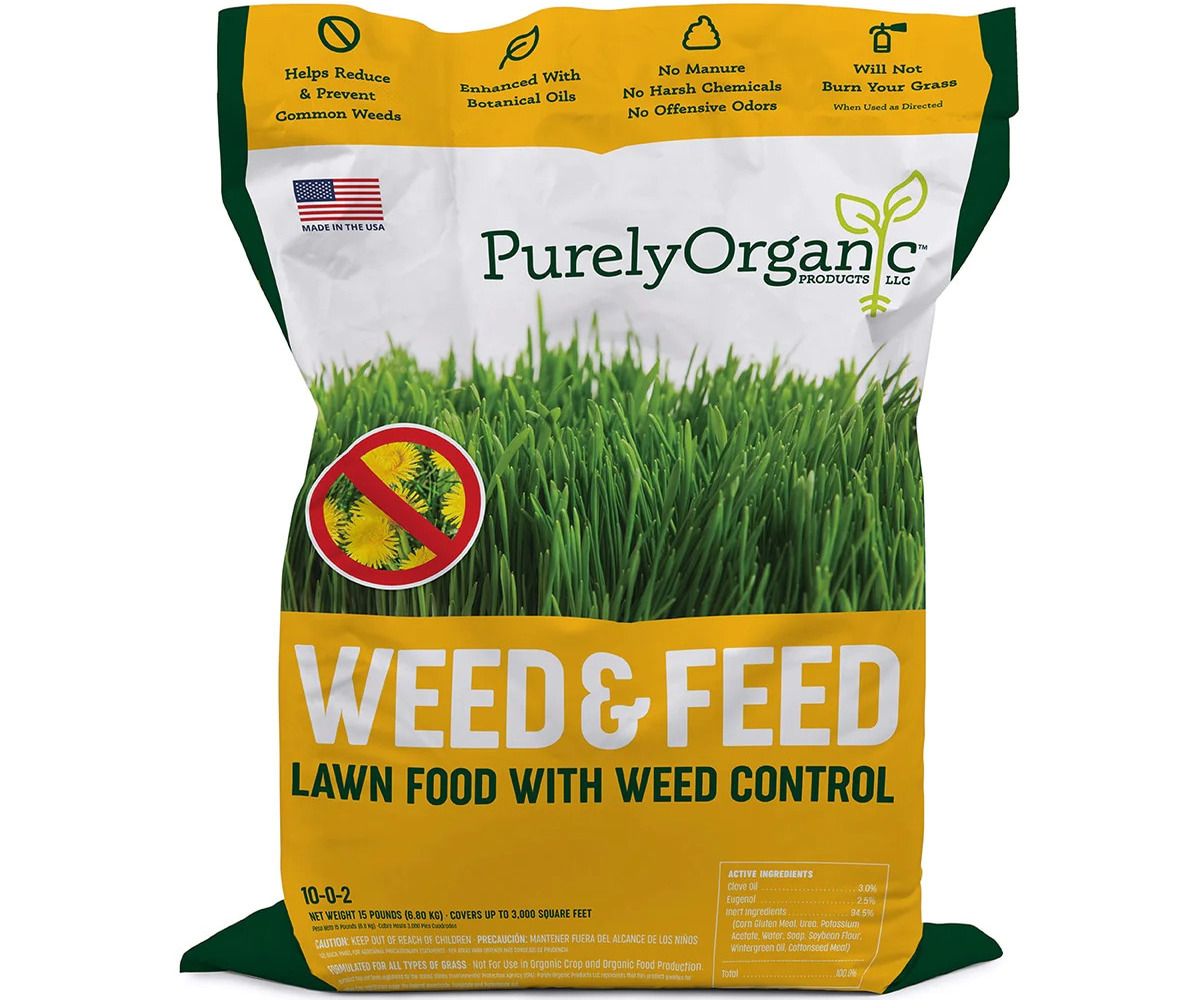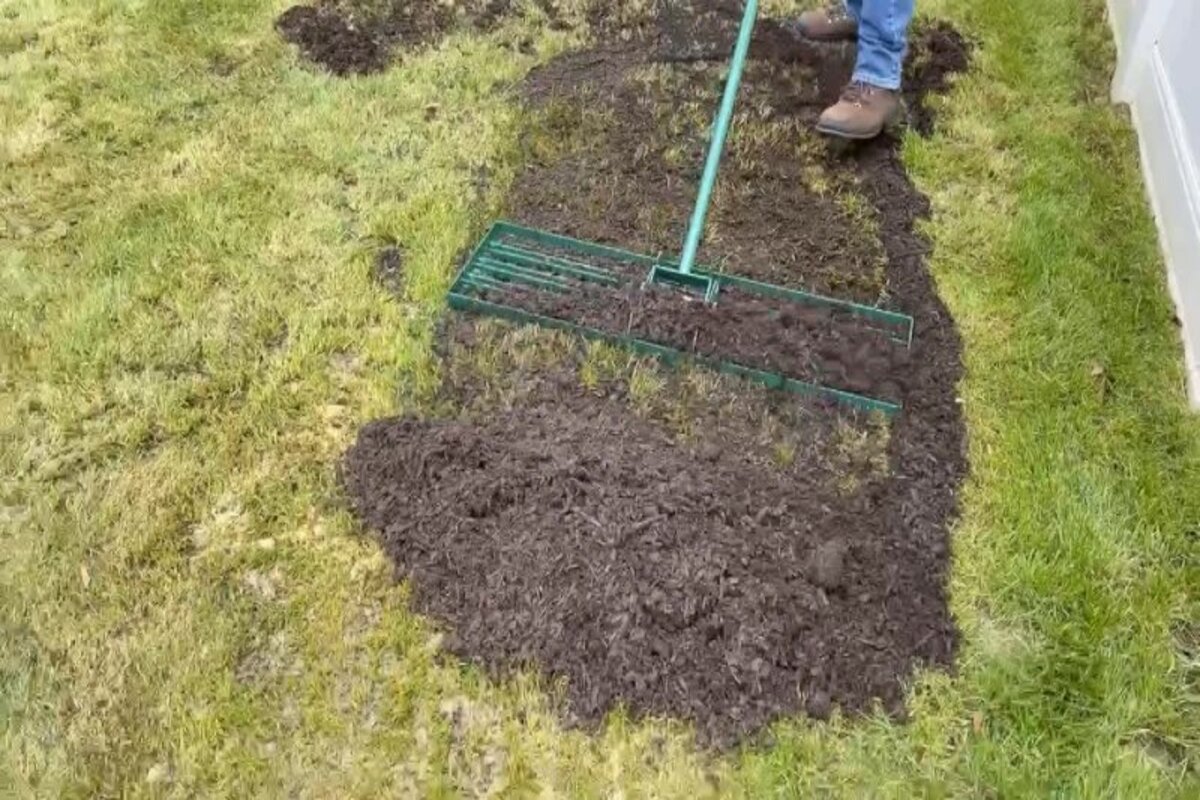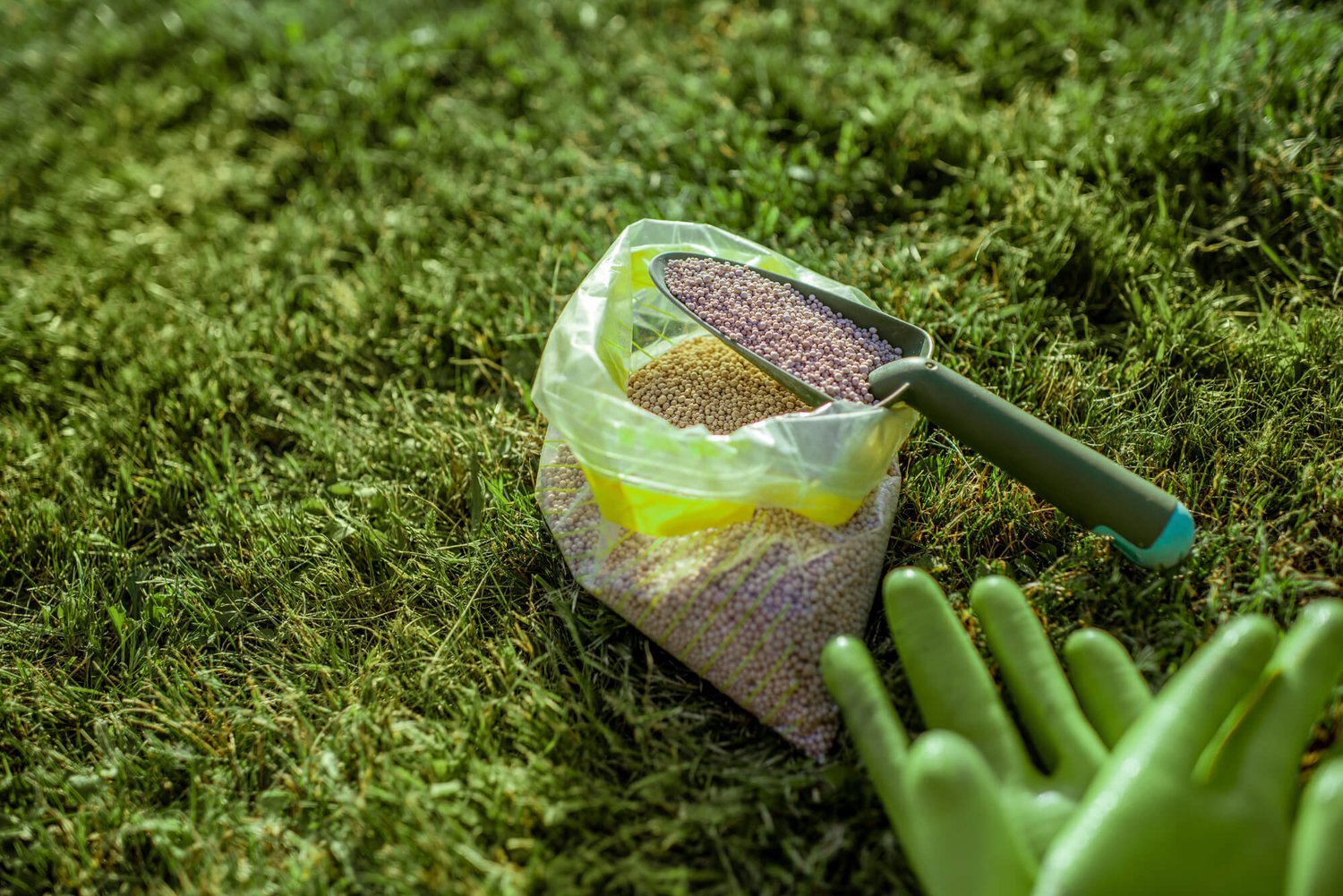Home>Gardening Tips and Tricks>Problem Solving>How To Treat Weeds In Your Lawn


Problem Solving
How To Treat Weeds In Your Lawn
Modified: January 22, 2024
Learn effective problem-solving techniques for treating weeds in your lawn. Discover expert tips and strategies to maintain a healthy, weed-free lawn.
(Many of the links in this article redirect to a specific reviewed product. Your purchase of these products through affiliate links helps to generate commission for Chicagolandgardening.com, at no extra cost. Learn more)
Table of Contents
**
Introduction
**
Maintaining a lush, green lawn is a source of pride for many homeowners. A well-kept lawn enhances the aesthetic appeal of a property and provides a comfortable space for outdoor activities. However, the presence of weeds can detract from the beauty of a lawn and hinder its healthy growth. Weeds are invasive plants that compete with grass for essential resources such as water, sunlight, and nutrients. If left unchecked, they can quickly spread and overtake the lawn, leading to an unsightly and uneven appearance.
Dealing with weeds effectively requires a combination of proactive measures and targeted interventions. By understanding the types of weeds commonly found in lawns, implementing preventive strategies, and employing appropriate weed control methods, homeowners can reclaim the beauty of their outdoor spaces and promote the growth of a vibrant, weed-free lawn.
In this comprehensive guide, we will explore various aspects of weed management, including identifying common lawn weeds, preventing their growth, and employing manual and chemical control methods. Additionally, we will delve into natural approaches to weed control and highlight the importance of maintaining a healthy lawn to minimize weed infestations. Whether you are a seasoned gardener or a novice homeowner, this guide will equip you with the knowledge and techniques needed to combat weeds and foster the growth of a thriving, resilient lawn.
With the insights and strategies presented in this guide, you will be empowered to tackle weed issues head-on, ultimately transforming your lawn into a verdant oasis that enhances the overall appeal of your property. Let's embark on this journey to reclaim the vitality and beauty of your lawn while cultivating an environment where lush, healthy grass can flourish.
Identifying Common Lawn Weeds
Before implementing weed control measures, it’s crucial to familiarize yourself with the common types of weeds that may infiltrate your lawn. By recognizing these intruders, you can tailor your approach to effectively combat their growth and minimize their impact on the overall health and appearance of your lawn.
- Dandelions: Easily identifiable by their bright yellow flowers and distinctive, serrated leaves, dandelions are pervasive lawn invaders that thrive in various soil conditions. Their deep taproots make them resilient and challenging to eradicate completely.
- Crabgrass: This annual weed is known for its rapid spread and ability to outcompete grass. It features wide, coarse leaves and tends to thrive in bare or thin areas of the lawn, particularly during hot and dry weather.
- Clover: Recognizable by its trifoliate leaves and small white or pink flowers, clover is a nitrogen-fixing weed that can benefit the soil but is often considered undesirable in lawns due to its rapid spread and low-growing nature.
- Ground Ivy (Creeping Charlie): With scalloped, kidney-shaped leaves and purple, tubular flowers, ground ivy is a persistent weed that spreads rapidly through creeping stems. It thrives in shaded, moist areas and can quickly overtake a lawn if left unchecked.
- Plantain: Broadleaf plantain, characterized by its low-growing rosette of leaves and tall, slender seed heads, is commonly found in compacted or poorly drained soils. Its presence indicates soil compaction and may signal the need for lawn aeration.
By familiarizing yourself with these and other common lawn weeds, you can effectively identify and target their growth using appropriate control methods tailored to each weed’s characteristics and life cycle. Understanding the behavior and appearance of these weeds is the first step toward implementing targeted strategies to manage and suppress their proliferation in your lawn.
Preventing Weed Growth
Prevention is often the most effective strategy for managing weeds in a lawn. By implementing proactive measures to create an environment that is conducive to healthy grass growth while inhibiting weed proliferation, homeowners can significantly reduce the need for extensive weed control efforts. Here are several preventive measures to consider:
- Maintain Optimal Lawn Health: A dense, vigorously growing lawn is less susceptible to weed infestations. Regularly mowing at the appropriate height for your grass type, watering deeply and infrequently, and providing essential nutrients through fertilization can promote robust grass growth, creating a natural defense against weeds.
- Overseed Bare or Thin Areas: Bare patches or thin areas in the lawn provide an opportunity for weeds to take hold. Overseeding these areas with grass seed appropriate for your region and soil conditions can help fill in bare spots, minimizing opportunities for weed establishment.
- Maintain Proper Soil pH and Nutrient Levels: Conduct soil tests to assess pH levels and nutrient deficiencies. Adjusting soil pH and addressing nutrient imbalances can promote healthy grass growth while creating less favorable conditions for many weed species.
- Implement Proper Lawn Care Practices: Aeration, dethatching, and proper irrigation practices contribute to a healthy lawn ecosystem, reducing opportunities for weed establishment and promoting the development of a robust grass root system.
- Use Mulch in Garden Beds: Mulching garden beds and around trees and shrubs can help suppress weed growth in these areas, preventing the spread of weeds to the lawn.
- Prevent Weed Seed Dispersal: Regularly remove weeds before they produce seeds to prevent their spread. Additionally, consider using grass clippings as mulch, as they can help smother weed seeds and provide nutrients to the soil.
By implementing these preventive measures, homeowners can create an environment that promotes the health and vitality of the lawn while minimizing opportunities for weed establishment. Prevention not only reduces the need for intensive weed control but also contributes to the long-term resilience and beauty of the lawn.
Manual Weed Removal
Manual weed removal, also known as hand weeding, is a fundamental and environmentally friendly method for managing weeds in a lawn. While it may be labor-intensive, especially for larger infestations, it is a targeted approach that allows homeowners to directly remove weeds without the use of chemicals. Here are effective techniques for manual weed removal:
- Hand Pulling: For broadleaf weeds such as dandelions and clover, hand pulling is often effective, especially when the soil is moist. Grasp the weed at its base and gently but firmly pull upward, ensuring that the entire root system is removed to prevent regrowth.
- Using a Weeding Tool: Weeding tools, such as dandelion diggers or fishtail weeders, can aid in the removal of weeds with deep taproots. Insert the tool next to the weed, press it into the soil, and lever the handle to lift the weed and its root system from the ground.
- Regular Cultivation: For annual weeds like crabgrass, regular cultivation with a hoe or hand tool can disrupt their growth and prevent seed formation. This method is effective for preventing the spread of annual weeds in the lawn.
- Thatch Removal: Thatch, a layer of dead grass and organic matter, can harbor weed seeds and provide a favorable environment for weed establishment. Regularly dethatching the lawn can minimize opportunities for weed growth and promote the health of the grass.
While manual weed removal may require time and effort, it offers the advantage of directly targeting weeds without introducing chemicals into the lawn ecosystem. Additionally, it can be a gratifying and meditative task for homeowners who enjoy hands-on lawn care. By incorporating manual weed removal into the lawn maintenance routine, homeowners can effectively manage weed populations and contribute to the overall health and beauty of their lawns.
Chemical Weed Control
Chemical weed control, often referred to as herbicide application, can be an effective method for managing weeds in a lawn when used judiciously and in accordance with label instructions. Herbicides are formulated to target specific types of weeds, offering selective or non-selective control based on their mode of action. When considering chemical weed control, it is essential to prioritize safety, environmental impact, and long-term efficacy. Here are key considerations and approaches for chemical weed control:
- Selective Herbicides: Selective herbicides target specific types of weeds while minimizing harm to desirable grass species. They are commonly used to control broadleaf weeds without affecting grasses, providing targeted and effective weed management.
- Non-Selective Herbicides: Non-selective herbicides, such as glyphosate, can effectively control a broad spectrum of weeds and grasses. They are often used in areas where complete vegetation control is desired, such as in non-lawn areas or prior to reseeding or re-sodding.
- Pre-Emergent Herbicides: Pre-emergent herbicides are applied to the soil to prevent weed seeds from germinating. They form a barrier that inhibits the initial growth of weed seedlings, offering proactive control against annual grasses and certain broadleaf weeds.
- Post-Emergent Herbicides: Post-emergent herbicides are applied to actively growing weeds and are effective against established weed populations. They can be selective or non-selective based on the target weeds and are often used for targeted spot treatments.
- Integrated Approach: Integrated weed management involves combining chemical control with other strategies, such as cultural practices and manual weed removal, to create a comprehensive and sustainable approach to weed management.
Prior to using herbicides, it is crucial to identify the target weeds and select the appropriate herbicide based on the weed species, the lawn type, and environmental considerations. Additionally, adhering to application rates, timing, and safety precautions outlined on the herbicide label is essential to minimize risks and optimize effectiveness.
When used responsibly and as part of an integrated approach to weed management, chemical weed control can be a valuable tool for addressing persistent weed issues and restoring the health and beauty of a lawn. It is important to approach chemical weed control with care, ensuring that it aligns with sustainable lawn care practices and contributes to the long-term well-being of the lawn ecosystem.
Natural Weed Control Methods
For homeowners seeking environmentally friendly and sustainable approaches to weed management, natural weed control methods offer effective alternatives to chemical interventions. These methods harness the power of nature and ecological principles to suppress weed growth while promoting the health of the lawn. By integrating natural weed control techniques into their lawn care practices, homeowners can cultivate a resilient and harmonious lawn ecosystem. Here are several natural weed control methods to consider:
- Manual Removal: Hand weeding and the use of weeding tools are fundamental natural methods for removing weeds from the lawn. By targeting weeds directly and physically removing them, homeowners can manage weed populations without relying on chemical interventions.
- Mulching: Applying organic mulch, such as wood chips, straw, or shredded leaves, around garden beds and landscaped areas can help suppress weed growth by blocking sunlight, smothering weed seeds, and retaining soil moisture. Mulching also contributes to soil health and fertility.
- Proper Lawn Care: Practices that promote the health and vigor of the lawn, including regular mowing, appropriate watering, and balanced fertilization, create an environment that favors grass growth while inhibiting weed establishment. Healthy, dense grass stands are naturally resistant to weed encroachment.
- Use of Organic Herbicides: Organic herbicides, derived from natural ingredients such as acetic acid (vinegar), citric acid, or essential oils, offer a non-toxic and biodegradable approach to weed control. While their effectiveness may vary, they provide a natural alternative to synthetic herbicides.
- Cultural Practices: Techniques such as overseeding, aeration, and dethatching contribute to a healthy lawn ecosystem, reducing opportunities for weed establishment and promoting the resilience of the grass. Aeration, in particular, can alleviate soil compaction, which is conducive to weed growth.
By integrating these natural weed control methods into their lawn care routines, homeowners can foster a sustainable and eco-friendly approach to weed management. These methods not only contribute to the long-term health and beauty of the lawn but also align with environmentally conscious practices, creating a balanced and thriving outdoor environment.
Maintaining a Healthy Lawn
Establishing and maintaining a healthy lawn is foundational to effective weed management. A robust and thriving grass stand not only enhances the visual appeal of the landscape but also naturally suppresses weed growth by outcompeting and inhibiting the establishment of invasive plants. By prioritizing the health of the lawn through proper care and maintenance practices, homeowners can create an environment that is less susceptible to weed infestations. Here are essential strategies for maintaining a healthy lawn:
- Proper Mowing: Regular mowing at the appropriate height for the specific grass species promotes strong root development and dense turf, reducing opportunities for weed establishment. Avoid mowing too short, as it can weaken the grass and allow weeds to thrive.
- Correct Watering Practices: Deep, infrequent watering encourages deep root growth and drought resistance in grass, contributing to a healthy and resilient lawn. Watering in the early morning minimizes moisture on the grass blades, reducing the risk of fungal diseases that can weaken the turf.
- Appropriate Fertilization: Applying the right type and amount of fertilizer at the proper times supports healthy grass growth and vigor, enhancing the lawn’s ability to withstand weed competition and environmental stressors.
- Core Aeration: Aerating the lawn alleviates soil compaction, improves air and water penetration into the soil, and stimulates root development. This process creates an environment that is more conducive to healthy grass growth while reducing the likelihood of weed infestations.
- Overseeding: Introducing new grass seed to the lawn, especially with improved and disease-resistant varieties, helps fill in thin areas, enhances turf density, and minimizes opportunities for weeds to take hold in bare spots.
- Weed Monitoring and Prompt Action: Regularly inspecting the lawn for signs of weed growth and taking prompt action to address emerging weeds can prevent the escalation of weed infestations and minimize their impact on the lawn.
By integrating these practices into their lawn care regimen, homeowners can establish a resilient, healthy lawn that naturally resists weed encroachment. A proactive and holistic approach to lawn maintenance not only promotes the beauty and vitality of the landscape but also reduces the need for extensive weed control measures, fostering a sustainable and thriving outdoor environment.
Conclusion
Managing weeds in a lawn is a multifaceted endeavor that demands a combination of proactive strategies, targeted interventions, and a commitment to maintaining a healthy and resilient grass stand. By identifying common lawn weeds, implementing preventive measures, and utilizing manual, chemical, and natural weed control methods, homeowners can effectively combat weed infestations while fostering the growth of a lush and vibrant lawn.
Understanding the characteristics and life cycles of common lawn weeds empowers homeowners to tailor their approach to weed management, addressing specific challenges with precision and efficacy. Preventive measures, such as promoting optimal lawn health, overseeding bare areas, and maintaining proper soil conditions, create an environment that is less hospitable to weed growth, reducing the need for extensive weed control efforts.
Manual weed removal, through hand pulling, the use of weeding tools, and regular cultivation, offers a targeted and environmentally friendly approach to managing weeds, contributing to the overall health and aesthetics of the lawn. Chemical weed control, when used judiciously and in accordance with best practices, can provide effective and targeted control of persistent weed populations, supplementing other weed management strategies.
Moreover, natural weed control methods, including mulching, proper lawn care practices, and the use of organic herbicides, offer sustainable and eco-friendly alternatives to chemical interventions, aligning with environmentally conscious lawn care practices. By integrating these methods into their lawn care routines, homeowners can cultivate a balanced and resilient lawn ecosystem that naturally suppresses weed growth.
Ultimately, maintaining a healthy lawn through proper mowing, watering, fertilization, aeration, and overseeding is fundamental to weed management, creating an environment that promotes the vigor and density of the grass while minimizing opportunities for weed establishment. By embracing a holistic and proactive approach to lawn care, homeowners can enjoy a vibrant, weed-free lawn that enhances the beauty and value of their outdoor spaces.
With the insights and techniques presented in this guide, homeowners are equipped to address weed issues effectively, fostering the growth of a thriving, resilient lawn that serves as a source of pride and enjoyment for years to come.





